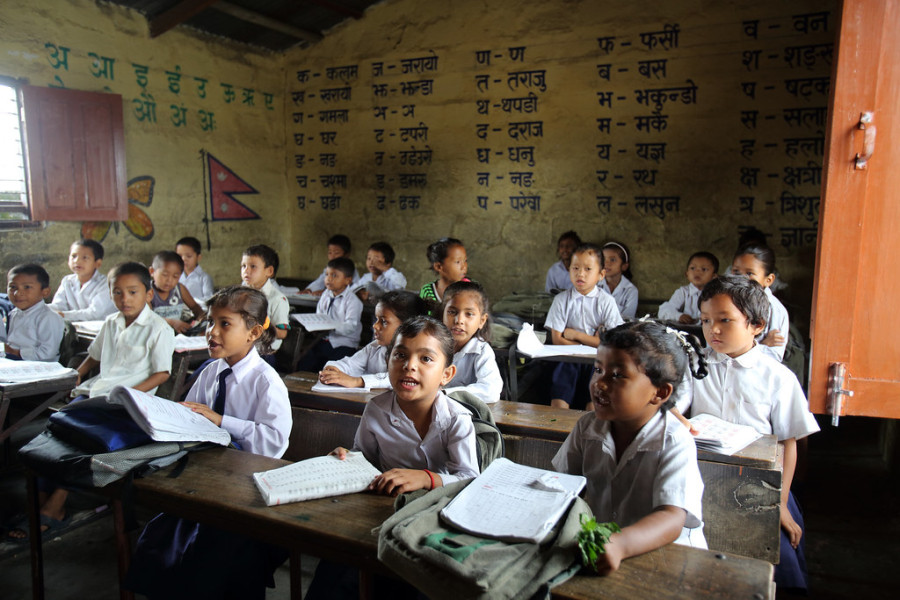Opinion
Investing in children is the best investment a country can make
The future of Nepal will depend entirely upon the decisions that are made today to invest in early childhood care, basic education and in reducing malnutrition and stunting.
Ned Olney
The rise of Asia, supported by China and India’s express growth, is unparalleled in both speed and scale. Asia is not only the largest manufacturer in the world but also the largest consumer. Moreover, seven of the top 10 countries in terms of foreign reserves are in Asia. With major financial centres in Hong Kong, Tokyo, Singapore, Shanghai and Mumbai, Asia has become the net capital exporter while also being the largest recipient of foreign investment in the world.
Yet, these indicators hide a much overlooked yet vital group: Asia’s poor children. The continent is home to the largest child population and the largest numbers of poor children in the world. All of these children have dreams and aspirations for education, health and opportunity. Save the Children’s End of Childhood Index in the third annual Global Childhood Report 2019 ranks 176 countries around the world based on the extent to which each country protects the lives and rights of its children.
The report revealed that the best-performing country in Asia and globally, too, is Singapore. This is the second time in a row the country has secured the coveted spot. Singapore invests heavily in primary and secondary education—which is free and compulsory for all children. The school system is regularly ranked as among the best in the world. It also has a very high GDP per capita which it invests in high-quality public services like education, nutrition and healthcare. These policies are conducive to creating an environment that protects children from the moment they are born. There is no secret why Singapore is first.
In the South Asian region, the Maldives tops the table (ranked 54th out of 176 countries), followed by Sri Lanka (56th). Both place in the top third of countries globally. The worst-performing country in the region is Afghanistan (ranked 158th) where most children are missing out on the childhood they deserve. It’s also the only country in the region to be listed at the bottom 20 globally (Pakistan is in the bottom 30).
Globally, the least progress was made in countries that had experienced some form of conflict which affects a nation’s overall growth and robs children of their childhoods. In East Asia and the Pacific, China ranks third in the region, following Singapore and South Korea. These are the only three countries in the sub-region to be placed in the top performance band, with relatively few children missing out on childhood. This is also the first time China is in the top tier. The worst-performing countries in the region are Cambodia, Timor-Leste, Solomon Islands, Papua New Guinea, and Laos, all of which are placed in the bottom third globally.
Going forward, there are immense challenges if Nepal wants to take its rightful place among its dynamic and growing neighbours. More than a third of Nepali children under five aren’t getting enough daily nutrition during the critical first five years. This means millions of children aren’t growing and developing properly, with life-long consequences for their brains and bodies. There are 770,000 children aged 5-12 years still out of school while attendance in early childhood education is still low at 51 per cent. In the light of this situation, the budget allocated for the fiscal year 2019-20 in the education sector is only 10 percent, which is nowhere close to the government’s reiterated global pledge to allocate 20 percent in the sector.
The future of Nepal will depend entirely upon the decisions that are made today to invest in early childhood care, basic education and in reducing malnutrition and stunting. The reduction of poverty and the economic growth of Nepal, 15 years from now, will depend entirely upon what investments are made in Nepali children today. Policymakers and politicians need to ensure every single Nepali child gets high quality early and basic education, as well as the basic daily nutrition they need to survive and thrive. Economists have measured that this is the best investment a country can make. We can unleash the immense potential of millions of Nepali children if we put their interests first.
Olney is the country director of Save the Children Nepal.




 9.12°C Kathmandu
9.12°C Kathmandu











